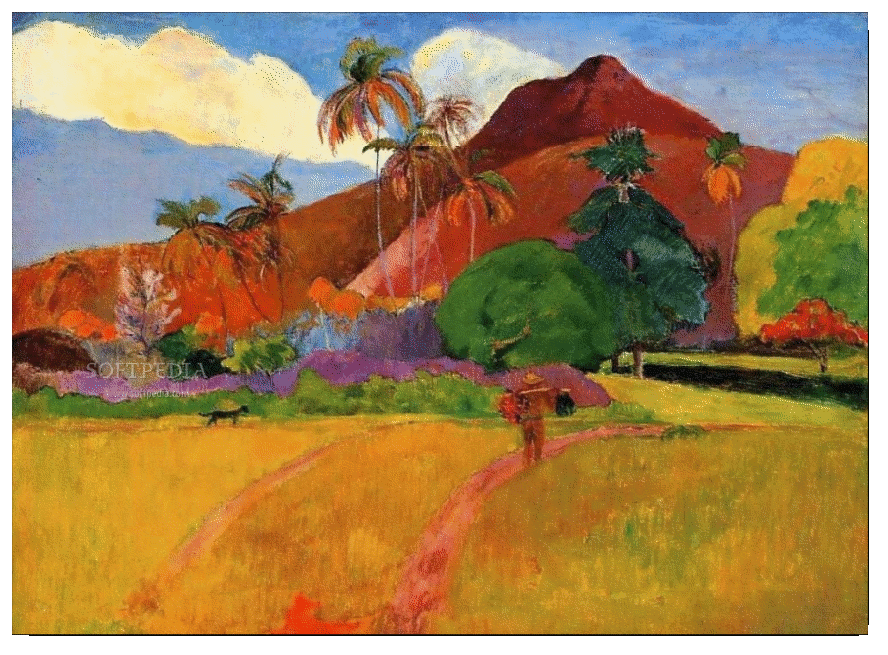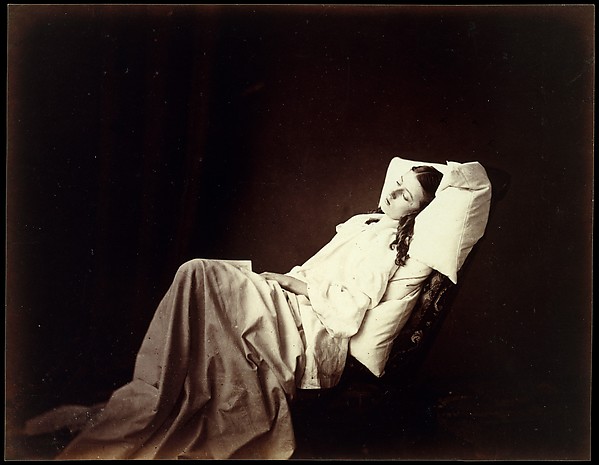I think that this has been the class I've enjoyed the most by now! Every piece of art that we saw today was PURE gold; either it was a painting, a piece of architecture, a chair, a bookcase, a table, jewellery or a wallpaper, each work fulfilled me more than any other of the different art movements we've discussing in the course. It's hard to define what art, and particularly the Arts and Crafts Movement causes in me, but I can say that it made feel so fresh; that's a perfect word: fresh. Maybe what makes this movement so enjoyable and appealing to me it's that it doesn't take a side on how to make art: you can decide to follow some of the Academy rules on your paintings,stick to geometry and symmetry on your furniture design, and, at the same time, use new styles and create asymmetric buildings with crazy roofs; I mean, you are not the baroque painter following the same patterns over and over again nor the impressionist just doing everything against the 'accepted' styles... you're just free to do whatever you want that is beautiful, useful, and makes human creations look part of nature.
Wednesday, January 30, 2013
Tuesday, January 29, 2013
Symbolism in Eastern Europe: Endre Ady
I found Endre Ady's poems really thrilling. They certainly give a sort of obscure or mysterious atmosphere that I think fits perfectly not only with his poems, but with his personality; I think he wanted to transmit us his tragic and problematic vision towards life and life's affairs. Ady's poems seem to me quite rhythmic and even catchy... they have this je ne sais quoi that make them so beautiful, beautifully dark, beautifully tragic, and beautifully attractive.
I think the first two verses of 'Life Terrifies Me' are just perfect and memorable:"Holy ecstasy-swans on great glad Waters
Seize me, but in vain."
Imaginism's Precursor: Stephen Crane
Stephen Crane's poems are some great examples of pure poetry. While reading Crane's work, you can just feel his freedom, his freshness and his imagination throughout the lines of the poems, and he doesn't even need to use any intricate vocabulary or any complex syntax! Crane's poems are direct, short and effective. In spite of the short length and the plain language Crane uses, his poems are actually deep, and make some good philosophical, religious and cultural references. In fact, I think his are the poems that I have enjoyed the most during the whole course; they make me smile, they make me laugh, they are just unique.
My personal favourite untitled poems:
"Think
as I think," said a man,
"Or you are abominably wicked;
You are a toad."
And after I had thought of it,
I said, "I will, then, be a toad."
___________________________
You
tell me this is God?
I tell you this is a printed list,
A burning candle, and an ass.
___________________________
A
man said to the universe:
"Sir I exist!"
"However," replied the universe,
"The fact has not created in me
A sense of obligation."
___________________________
I
saw a man pursuing the horizon;
Round and round they sped.
I was disturbed at this;
I accosted the man.
"It is futile," I said,
"You can never -- "
"You lie," he cried,
And ran on.
Paul Gauguin
I think Paul Gauguin's work is attractive rather for its rareness than for being beautiful. In fact, I wouldn't consider his paintings pretty or beautiful, and I wouldn't like to paint them at all, but still I think they are great. I like how he can mix some sort of realistic elements with some abstract on the same canvas, and how he manages to obtain that abstraction from a strange mixture of colours. Paul Gauguin will never be my favourite painter, but he's certainly to look up to.
Pictorialist Photography: Britain, France and America
I've always liked and appreciated photography as a modern art form, but I never imagined early photographers could actually do the effects and compositions that we can look at in pictorialist photographs.
- Pictorialism in Britain
The two remarkable photographers of British pictorialism were Henry Peach Robinson and Peter Henry Emerson. Both artists' work impressed me; their photographs look almost like some painting sketches or some really detailed oil paintings. I liked these guys so much that I search more of their work and these are some of my favourites that I found.
 |
| Emerson's |
- Pictorialism in France
In France, we can found another pair of great photographers: Constant Puyo and Robert Demachy. Both of them are marvellous in their style, but as Puyo's photographs portray more magical or Disney-like scenes (by the way, 'Montmartre' features some really nice effects in the background), Demachy's 'Struggle' is just out of the common idea we have of photography at that time, it really looks like an actual black and white oil painting! If I had to choose one photographer, I wouldn't know which one to pick.
 |
| Demachy's |
- Pictorialism in America
America had a bunch of pictorialist photographers, but I think that the most remarkable ones were Alfred Stieglitz, Edward Steichen and Gertrude Kasebier.
Stieglitz photographs portray pretty much common scenes in old, ugly, and contaminated cities, but the scenes still look quite romantic, sensitive and beautiful. I think that Stieglitz's photographs could be used as decoration in some novels of the Romanticism.
 |
| Stieglitz's 'A snapshot: Paris', my favourite |
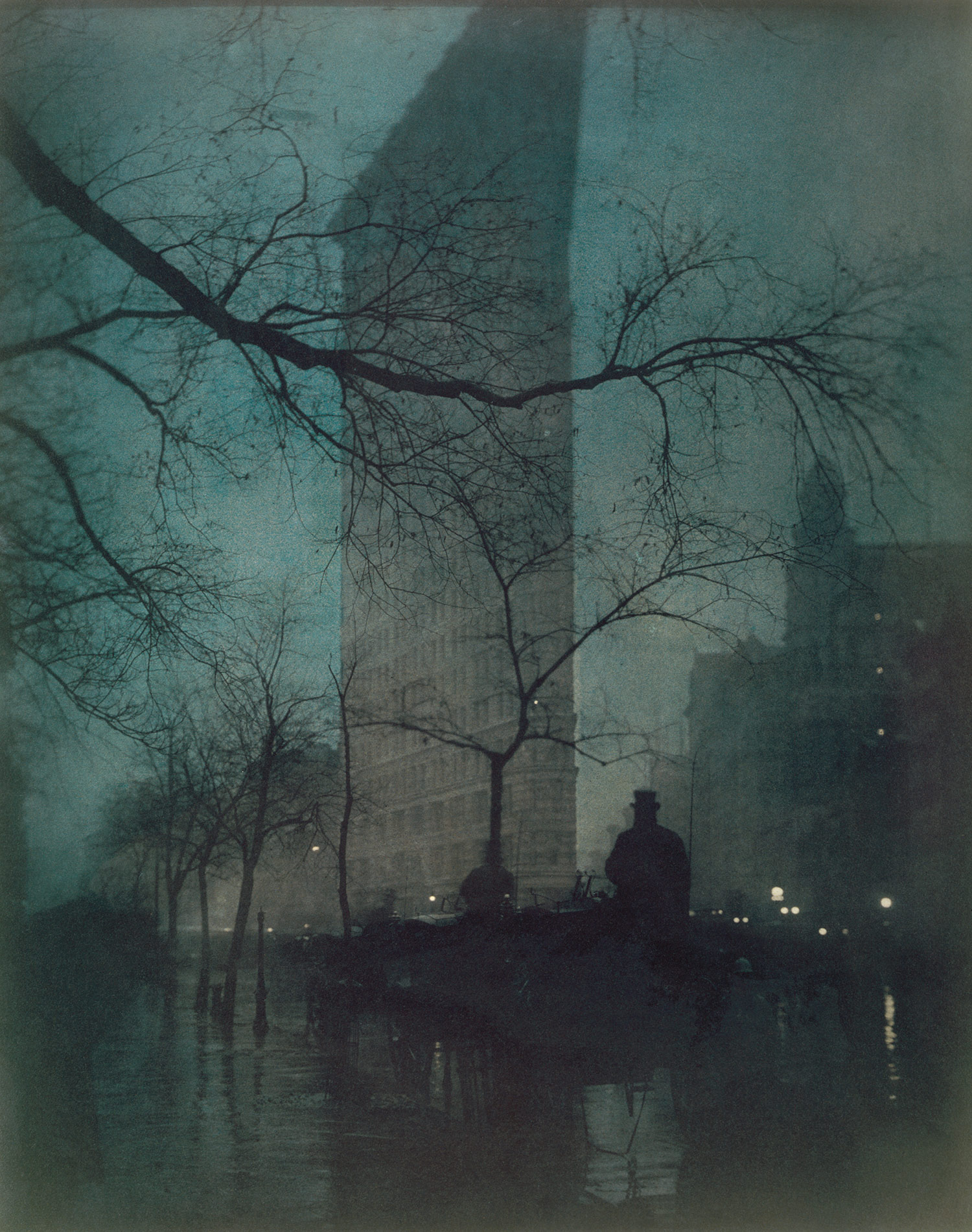 |
| Steichen's 'A Flatiron Building' By the way, are those blues? How could he even get that effects at that time?! |
Kasebier's photgraphs seem to feature some effects that we could use now to manipulate images on PowerPoint or Word, and it seems to me quite amazing that she could obtain those effects at that time and make great work out of it.
Finally, here are some other American photographs I enjoyed a lot:
 |
| White's 'Raindrops' |
 |
| Coburn's 'Spiderwebs' |
Symbolism in Music: Arnold Schoenberg
Well, what can I say? Listening to Schoenberg's 'Pierrot Lunaire' was weird, not only for the rather strange arrangement and sound of the music, or the sprechstimme style that the vocalist used, but also for the German that always makes everything sound creepy -at least for me-. I think that if you're looking for a nice, enjoyable melody to chill and relax, you certainly will never think of listening 'Pierrot Lunaire'; the piece is aesthetically terrible, but somehow, I liked it. Actually, I don't know why I got this crazy idea that the lyrics , and even some elements of the music, could perfectly work for some of those odd German heavy metal bands -I wouldn't be surprised if I found a heavy metal cover!-.
CATNIP: Egress to Oblivion?
This is nothing related to the course, but I wanted to share the Sundance Film Festival winner for this year: a great short, fake, and hilarious cat documentary, CATNIP: Egress to Oblivion?
Sunday, January 27, 2013
Post-Impressionism Class Reaction
Gustav Mahler
I heard Mahler's 'Symphony No. 4' while writing the other posts of this blog, and I all I have to say is that despite the notorious heterogeneity of the melody, it is quite enjoyable and relaxing. I think the part I enjoyed the most was the last 7 minutes, not only because of the thrilling and attractive rhythm of the music, but because of the soprano's voice that suddenly joins the instruments. I think I could have enjoyed more this symphony if the soprano had appeared before, she gives a perfect balance to the music when she's singing!
Les Nabis
First of all, I want to point out Denis's quote about painting: "Remember that a picture, before being a battle horse, a nude, an anecdote or whatnot, is essentially a flat surface covered with colours assembled in a certain order" This quote is SO TRUE. Even though I've painted several paintings by now, I'm still amazed when I finish painting; I always think that it is magical how we can start with a white canvas, add some patches of paint, and end up creating a new world.
Now, talking about the paintings of this group of French fellas, I have to say that I didn't really like most of their paintings. I think most of them lack of real passion, they do not transmit me anything at all, or maybe I just didn't understand them.
The paintings that actually caught my attention were Vuillard's and Bonnard's ones. Their interiors -as well as Vuillard's exterior 'Place Vintimille'- are some works I would pay to see in real life. Even though we can really see clearly people's faces on their paintings, they transmit or express more to me than any of the other painting in this group of visionary French painters.
 |
| 'Place Vintimille' |
Early Modern Sculpture: Auguste Rodin, Camille Claudel and Aristide Maillol
I always enjoy a good sculpture. So, why wouldn't I enjoy Rodin's, Claudel's and Maillol's works?
Rodin is obviously the most important sculpture the world produced in the early modern era. His works are memorable not only because of their incomprehensible perfectiveness, but because of their challenging nature. His works seem really realistic even when they are rather rough, sketchy or even 'unfinished' human bodies. His famous 'The Thinker' is one of the most important pieces of art the humankind can treasure, but I admit that I feel more moved by 'Walking Man'.
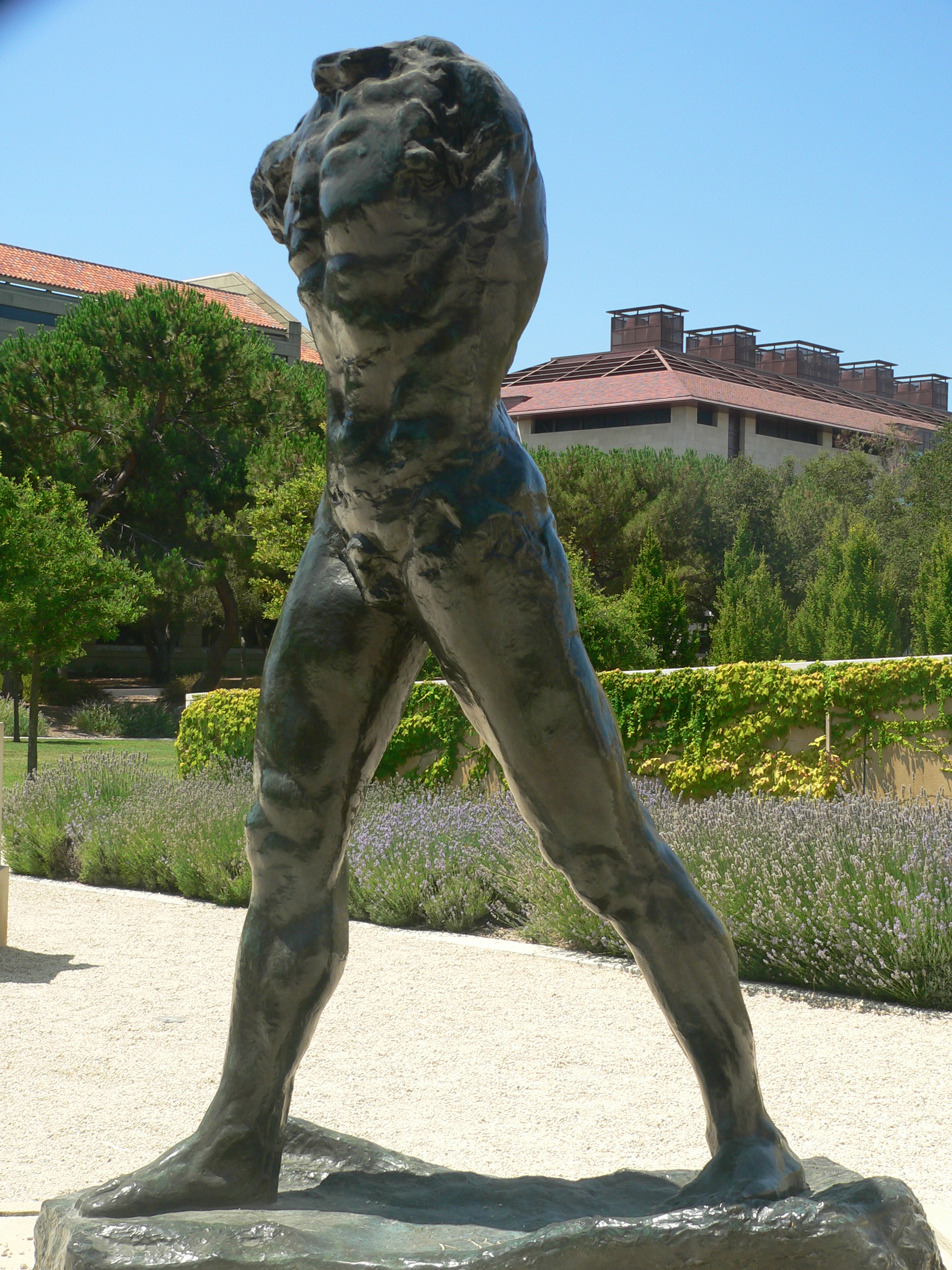 |
| Rodin's 'Walking Man' |
Claudel's detailed, delicate, and perfect work is definitely my single favourite; everything she made is just sublime, I have no words for it; her sculptures are indescribably perfect: everything is in the right place, her creations talk to me, they seem alive, they ARE alive for me. *Hats off*
 |
| Claudel's 'La Valse' -my favourite- |
Maillol's work, on the other hand, was quite disturbing for me. It's not that I didn't like his sculptures, but the poses of those women are striking, creepy, and pretty much alarming. I mean, what is this woman doing?
 |
| Maillol's 'The River' |
'The Sunflowers' by Douglas Stewart
 |
| Van Gogh's sunflowers |
Reading Stewart's 'The Sunflowers' was a unique experience. It definitely expresses a whole new vision of sunflowers (at least for me); it was quite shocking because I grew in a kinder garden that was full of sunflowers (in fact his name is 'Los Girasoles' <The Sunflowers>), and I had never imagined that someone could actually find evil or madness on those beautiful flowers... yeah, they move, but that's what makes them special, no dangerous, right? My yellow fellas couldn't be bad, right?
I have to affirm that this short poem is not only really interesting and different, but a sublime piece of art. I read it over and over again, and each time I loved it more and more.
Monday, January 21, 2013
Augustus Saint-Gaudens
If there's anything besides opera singing that I could never do, it is definitely sculpturing. I find sculptures mysterious and almost unreal and when I see any of them I just think: how did they even do it? Now that I've seen some Saint-Gaudens's sculptures, I'm just overwhelmed by the strong details that each component of his 'Robert Gould Shaw Memorial'; giving individual assets to each of those figures seems almost impossible to me, but he did it! I guess I have add another artist to my 'Appreciation list'.
 |
| Diana |
Realism in Poetry
Realist poetry is so politically incorrect that it actually works -at least for me-. I found it enjoyable and funny; realist poetry can really change your mood.
Edwin Arlington Robinson's poems were unexpected. 'Richard Cory' seemed at first a happy kid's tale, but that end... THAT END. He has shown us how those 'fortunate' rich guys that have 'everything' can actually have nothing but a miserable suicidal life (which it's really true). On the other hand, 'Miniver Cheevy' actually reminded of Don Quixote's crazy mind longing for the old times.
Rupert Brooke's poems were equally plain and realistic. 'A Change Passage' just narrates in a skilful way how a lot of normal people feel in the sea, and I loved how he mixed and compared the sea-sickness pain with the love or soul pain. In contrast, I can say that 'Success''s ending <"And I'm alone; and you have not awoken"> is just so lovely; I don't want to sound cheesy at all, BUT this poem touched my heart and all I can say is that it is really beautiful.
Late 19th Century American Realist Painters: Thomas Eakins, Winslow Homer and John Singer Sargent
All Eakins', Homer's and Sagent's paintings pleased me in different ways. First of all, I loved Eakins' 'Miss Amelia Van Buren' and 'Wrestlers'; the characters of those paintings don't look as if they were posing to the public, they are just normal people going on with their sad (?), upsetting (?), violent life. The lights that are portrayed are just perfect for the scenes and, in a few words, the two mentioned paintings look just so magically real. 'The Swimming Pole' caught my eye too because there's something different in there: generally, in painting we get to see a lot of female nudity but we don't really get to see too much of a man's body, but in this painting, there are not only some naked women swimming, there are men with no bathing suits!
 |
| Wrestlers |
Holmer's 'The Fox Hunt' at first enchanted me with that cute fox watched from behind just sit in the snow... then I noticed! It actually took me a time to see those threatening black birds coming for the fox; they completely changed the atmosphere of the painting. (I actually just finished a painting of a fox). 'Kissing the Moon' is genius; that unseen boat it's just perfect and I felt like Homer sort of wanted to play with the public with that. On the other hand, I found 'Snap the Whip' just too lovely: I feel it transmit a lot of tenderness.
Finally, my favourite: Sargent. I don't usually like portraits, but Sargent's are surely some great pieces! It seems that we actually know these girls; it's like they are looking at us, just waiting to say something... something that goes with their particular personality that enriches more the painting. I can only take my imaginary hat off.
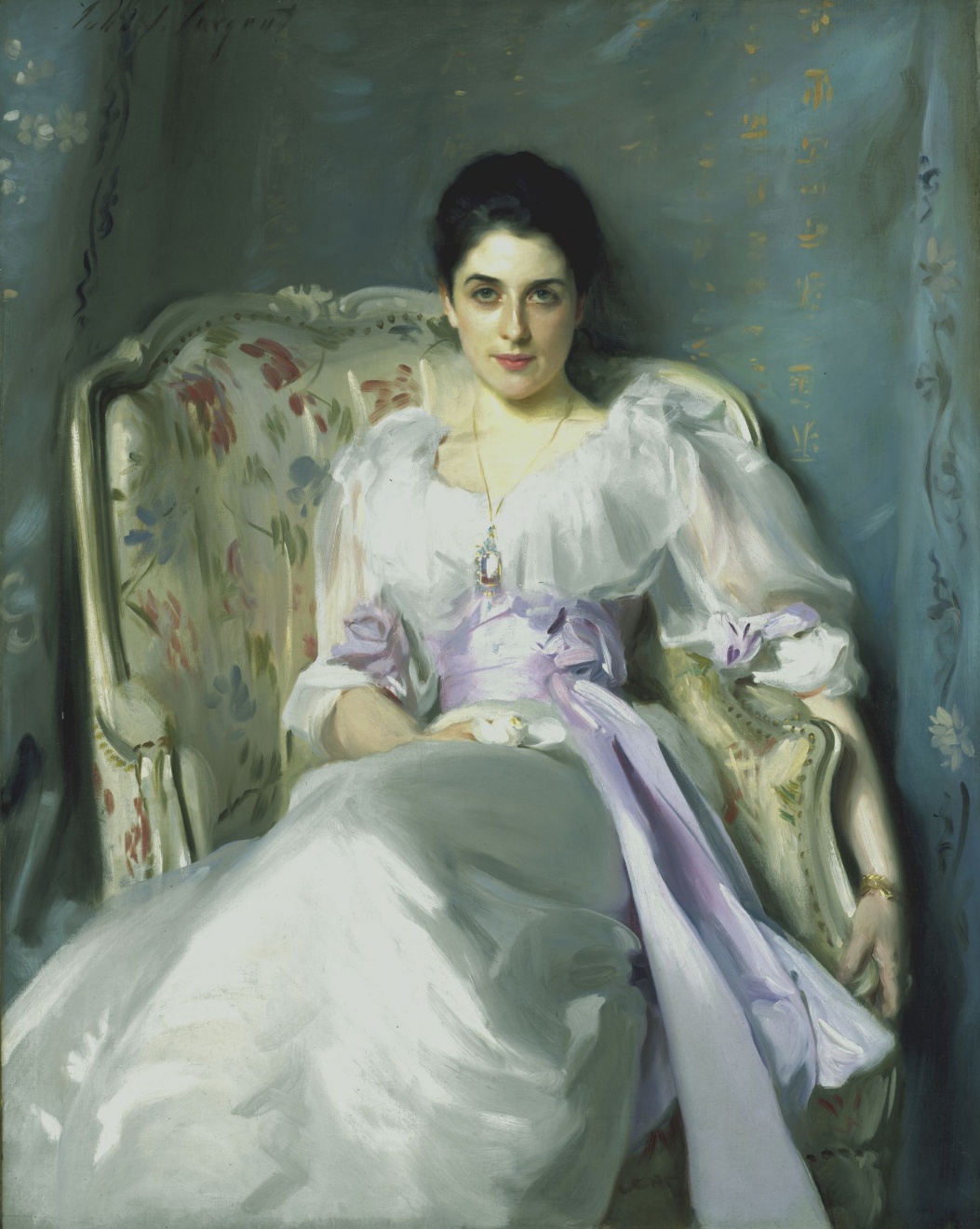 |
| Lady Agnew of Locklaw |
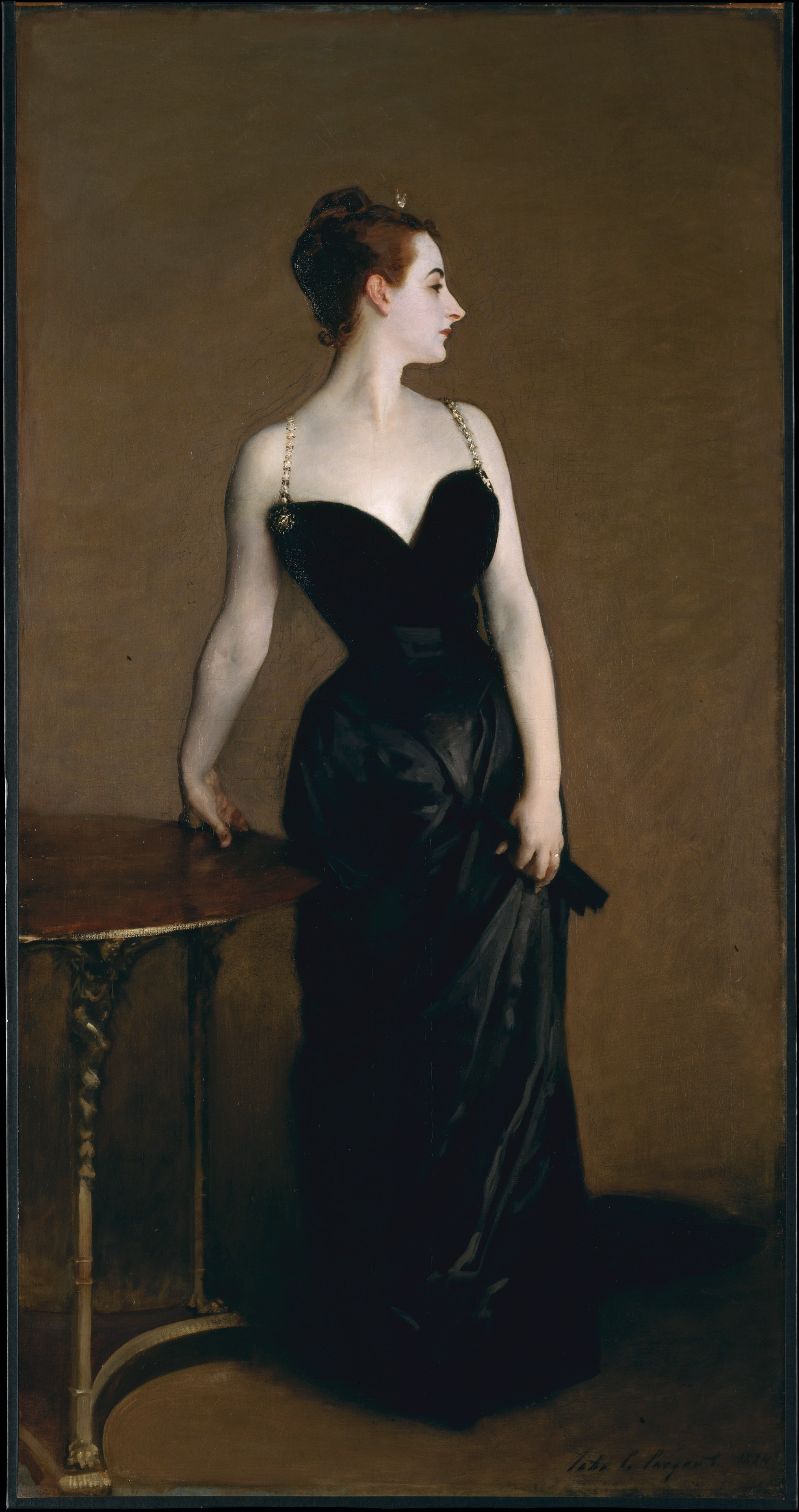 |
| Madame X |
Giacomo Puccini and Verismo Opera
Of course, I have already heard about Puccini's 'La Boheme', but I have to admit I never took a time to actually listen to it. I've always thought that the operas offer the public an experience that any other form of art (painting, literature, cinema, etc.), or any other form of music so far can ever imitate. I consider opera singers as some sort of elite of music, and I don't really sing, but I can infer that opera is an upper level challenge for singers; I guess it takes years and years and years -and years- to actually become o good opera singer.
The last opera I assisted to was 'Madama Butterfly' -another opera of Puccini- (sometimes this little city offers great shows) about one or two years ago. It really touched me... the story, the sopranos, tenors, even that minimalist scenery were just the perfect combination for the old Pablo de Villavicencio theatre. Now that I have listened this short excerpt of 'La Boheme', I recognized that weird sensation I felt with 'Madame Butterfly'... Opera always leaves me speechless.
Sunday, January 20, 2013
Impressionism Class Reaction
Last class we got to see a lot of painting from several painters of the Salon des Refuses, the Barbizon School and Impressionism. We got to see some of the Gods of painting: Edouard Manet, Claude Monet, Camille Pissarro, Pierre-Auguste Renoir, and Edgar Degas. I think that the one that I enjoyed the most was the last one. Degas' work can be described in one word: challenging. The angle of vision and the cropping of the images he portrays make his work something really special. He isn't afraid of challenging the public with unexpected angles of vision, or by representing unimportant parts of the scene (people is looking at something that is important, but we can't see it!), or even presenting death spaces at the center of the painting (which is really important in most paintings)
 |
| Place de la Concorde |
Impressionism in Music: Charles Tomlinson Griffes and Frederick Delius
Griffes' 'The White Peacock' and Delius' 'A Song of Summer' are a couple of melancholic pieces of music. I think that if they could be used on a film, characters will be suffering or living some serious drama. Personally, I got rather sad and lonely while listening the mentioned melodies.
'The White Peacock' featured a quite particular of piano that I completely enjoyed -even when I was getting melancholic-.
 |
| I could feel I was in a scenery like this while listening to these Impressionists |
Impressionism in Literature: The Tachtigers: Jacques Perk and Albert Verwey
When I was reading Jacques Perk's and Albert Verwey's poems all I could think about is that those pieces could have been written by the young Werther to his confident Wilhem on Goethe's masterpiece 'The Sorrows of Young Werther'. Maybe I'm wrong, but these authors sort of reminded to the romanticist nature and beauty lovers. It seems that both authors are narrating a beautiful painting. I think anyone who reads 'Evensong' or 'Moonlight' will like to be in there and see with his or her own eyes what the poets are talking about.
 |
| Werther |
Impressionist Sculpture: Medardo Rosso
I have one word for Rosso's sculptures: overwhelming. I had never seen such pieces of art and, in fact, I had never imagine that such abstract and grotesque figures could exist. Both 'Maternity' and 'The Golden Age' are astonishing, confusing, and alarming. Are those babies suffering or just being like any other crying baby? Are their mothers loving them? These sculpture leave a lot of unanswered questions.
Here are other two astonishing, confusing, and alarming sculptures of Medardo Rosso:
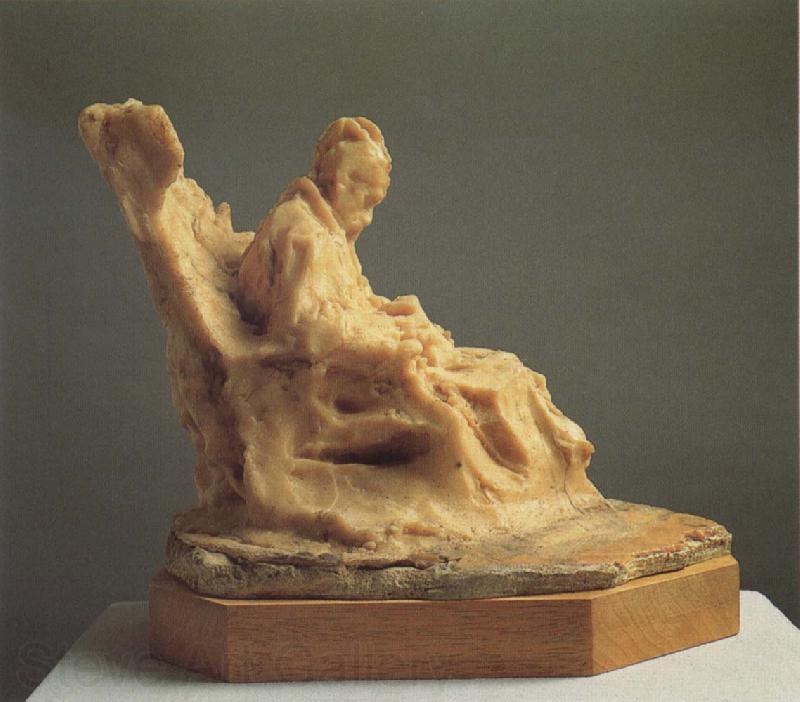 |
| Sick Old Man |
 |
| Book maker |
Impressionism in Music: Maurice Ravel
As I have already said, I don't know a lot about music, but I have always found violins, violas and cellos as the perfect combination for music. Ravel's 'String Quartet, 2nd movement' seems to me to have a perfect balance between calm and soft music and some crazy sequence of notes (somehow like Debussy's 'Prelude à l'après-midi d'un faune'); it is a really enjoyable piece of music. I think Ravel was a great composer and I am amazed that his few works are still played nowadays.
String instruments are my favourite. A violin or a cello can make me happy forever; so, I'm going to share a couple of videos of 2CELLOS making a cover of 'Smooth Criminal' and 'Viva la Vida'
James Abbot McNeill Whistler
Whistler is contrasting. His 'Nocturnes' are a couple of ugly paintings! There are some paintings that aren't really pretty or beautiful, but that are still great works (the best example for me would be Goya's 'Saturn Devouring His Son'), but Whistler's 'Nocturnes' are just ugly for me. However, his 'Peacock Room' is REALLY impressive, almost perfect, precise details. It seems that we're actually standing in there!
Gustave Caillebotte
 |
| Rainy Day, Paris |
Caillebotte's paintings have become part of my favourites so far in this course. His work is simply fantastic and hypnotic.
Personally, I could stare at 'Rainy Day, Paris' for hours and never get tired. When I first took a look at 'Rainy Day, Paris' I could actually feel that I was at Paris once again; it portrays the exact same atmosphere that I have hold in my memory. This painting looks so natural to me: people there are just doing what normal people are supposed to do, there's nothing special going on in there, but somehow the panorama amazes me. Maybe is the mystery of what is that couple looking at, maybe is that building in the back or maybe is that death sky. Anyway, this painting is simply marvellous!
'Young man at the Window" and "Interior" are two pieces of pure mystery in different ways. Both portray people from behind looking out of the window. In my opinion, the first painting expresses powerfulness.. that man is satisfied with his life and looks dominantly at the window. The second one gives a rather reclusive atmosphere; it seems to me that that woman is melancholic, waiting for something to happen, something that will thrill her life with that man reading the newspaper...
Impressionism in Music: Claude Debussy
I think that the most difficult art to review is music. It is hard for me to criticize music because I don't really know a lot about it; however, I can affirm that Debussy's 'Prelude à l'après-midi d'un faune' has enchanted me. At first, I just though 'well if this is impressionist music, I'm not quite impressed by this calm and pretty much familiar music', but then there's this magical drastic change in the music and a bunch of exalted sounds combining that just amazed me. In fact, I end up liking how this piece mixes some calm music intervals with some crazy music intervals. I think 'Prelude à l'après-midi d'un faune' could be a perfect piece for a silent film.
Tuesday, January 15, 2013
The Uncanny - Luminists and Other 19th Century American Painters
I have to admit that I find the Luminists' paintings quite different. Even if they look somehow realistic, there's something about them that just doesn't fit completely... Those landscapes and scenarios actually familiar, there shouldn't be anything strange, but somehow they just don't look completely right (even in a fantasy)... they are uncanny!
Even though there's crackling in some works, the paintings have an exquisite brushwork, there are no brush marks or painting clumps on them and I really like that. In my own paintings, I prefer not to leave any brush marks at all, so I kind of feel comfortable with this painters.
 |
| "Boatmen on the Missouri" |
Railroads
We often separate science and technology from art as if they never influenced on one another; maybe we keep forgetting that artists are humans who are also affected by such phenomena. We can get a clearer portrait of the influence of science and technology in art on films, I think that's when it comes obvious that something has changed, tut painters, poets, musicians, even dancers respond to what is happening in the world. A great example to explain this are the railroads: Soon after their success, painters like J.M.W Turner responded with beautiful paintings with the trains as their main character; poets like Jones Very and Emily Dickinson started writing about them; films started showing railroads on movies, even made them a crucial part of the story; even photographers were devoted them!
Charlie Chaplin's Modern Times is a great example on how the industrialization, science and technology affect arts too:
 |
| One of my new favourite photographs |
Emily Dickinson
Emily Dickinson entered her room with Maggie, pretends to lock the door and says: "Maggie, here is freedom"
 While reading Emily Dickinson's poems, I could only think about a miserable, lonely, weak woman... 'I felt a Funeral, in my Brain' made me feel the saddest person in the world and that non-ending ending was just disturbing, exhausting, scary; this poem kept me thinking some minutes about life, my life, the life of everyone I love.
While reading Emily Dickinson's poems, I could only think about a miserable, lonely, weak woman... 'I felt a Funeral, in my Brain' made me feel the saddest person in the world and that non-ending ending was just disturbing, exhausting, scary; this poem kept me thinking some minutes about life, my life, the life of everyone I love.Loners can sometimes create the most sublime works of art. I take my hat off.
Gerard Manley Hopkins
What I like the most about Hopkins was his sensitivity to beauty. I find remarkable that in a period of industrialization, smog, and basically no care for beauty (the cities' landscapes were rather ugly back then), a man had took his time to write poetry about nature and the common place things -a leaf, a cloud, the rain- that he loved; he said that to value those little things is the beginning of wisdom.
It such a shame that his 'secret' poetry was ignored until his death. Society, just fearing for what is different, 'incorret' and experimental, just lost the opportunity of enjoying Hopkin's spiritual and beautiful poetry.
Ukiyo-e: The Floating World
"Japanese art - we all had that in common"
-Vincent Van Gogh
I have to admit I was surprised I could recognized some Ukiyo-e works because when I stated reading about this genre, I was pretty sure I had never seen any piece of art that belongs to it.
I like when art remembers the simple things in life: the beauty of nature, the movement of the sea, the people you're surrounded by, the most common street, that bridge you always to cross to get home... I think Ukiyo-e is one the best portraying these simple -and usually ignored- kind of things that complete everybody's life. Also, I think it is really interesting that such an important genre has its origins on the cheap and despised market of Japanese art; this genre comes from average people mass-producing a series of pretty images! No high class Japanese man or woman would have considered these prints high art, but they scaled to created an important genre not only in Japan or Asia, but in the whole world... just amazing!
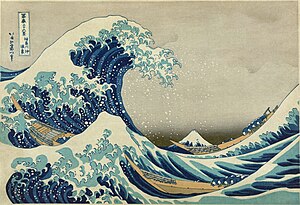 |
| My favourite Ukiyo-e piece |
Laurence Sterne and Walt Whitman
"Nothing is so perfectly amusing as a total change of ideas"
-Laurence Sterne
"Do I contradict myself? Very well, then I contradict myself, I am large, I contain multitudes"
-Walt Whitman
The reason I decided to join Laurence Sterne and Walt Whitman into a single post it's because I think they were both specially daring to their societies and corresponding times. Authors that mess too much with sexual issues have always problems with pubic opinion, but these two guys didn't care that much about that.
Laurence Sterne himself seems to me a weird literature treasure since he was higly influenced not only by the Rabelais, but by the great and unforgettable Cervantes... what a great mixture! Besides, what kind of weird and naughty novel divided in 9 volumes introduces the main character and hero until the 3rd volumen?! Seems almost like a joke, a daring joke that just invites you to want to know more about him.
Walt Whitman is surely a man you can flatter as well. It's overwhelming how he can basically talk about everything: the earth, nature, cities, democracy, the human body, the human essence, love, sex, beauty and so on... Of course, he was pretty hated by some people, but sometimes to be great, you have to create controversy, and he certainly did a good job on that; I think he actually liked it and made it on purpose.
Edgar Allan Poe
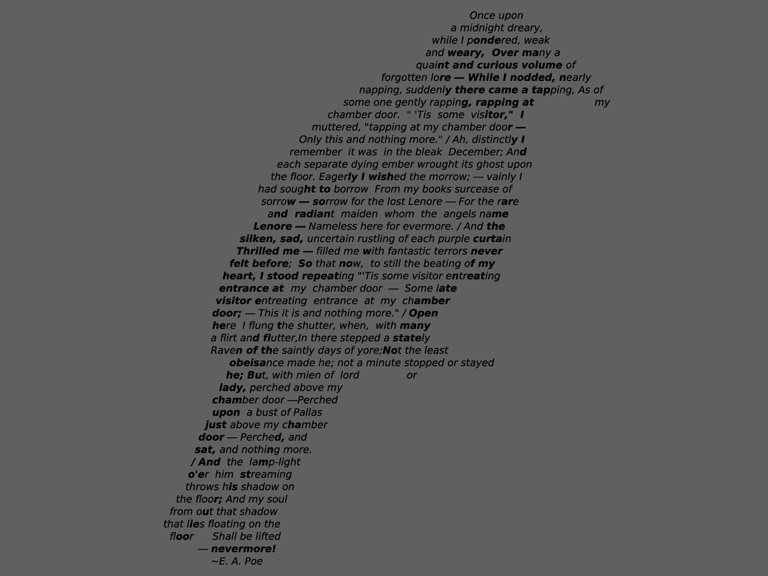 |
| The Raven |
I personally have read several poems and stories by Edgar Allan Poe; his work has always attracted me even though it makes me feel uncomfortable, scared or irritated quite often. I have always found Allan Poe as one of the most original and thrilling authors on history. In a few words, he changed the way detective, criminal and terror stories are told.
When I read his writings, I can really feel the madness of the murderer in 'The Tell-Tale Heart', the desperation of the man in 'The Raven', or the cholera that the mad and alcoholic murderer feels when he sees that one-eyed animal on 'The Black Cat' (even when I love cats). I always get this no-stopping heart beat while reading his masterpieces.
This is one of my favourite short animation of all time combining several stories and poems of the old Allan Poe. Designed by Tim Burton and narrated by Vincent Prince, here is Vincent:
British Landscapes: Constable, Bonington and Turner
John Constable
If I had to describe Constable's painting in one word, I would just say anger. The skies and the water that are portrayed in his paintings are are not quite terrifying, but rather uncomfortable to look at: clouds are chaotic, threatening, violent, dark, and water looks to me suffocating and oppressive. John Constable sure has really beautiful paintings, but I would never like to visit those landscapes he painted.
 |
| Violent skies and water on Constable's paintings |
 |
| Bonington's 'La Ferte' |
Richard Parkes Bonington
It is clear that unlike the Luminists, Bonington didn't focused on delicate brushworks and painted not quite defined figures. When I saw those brush marks on Bonington's 'La Ferte' (Figure on the left), all I could think about is that it seems that he made such an imperfect brushwork that actually turns out to be perfect for his paintings. Those blurred and somehow sort of abstract figures on Bonington's paintings send the spectator to an atmosphere of loneliness and thoughtfulness that I-as a inexperienced painter- can say it's difficult to catch.
J.M.W Turner
As much as Constable, J.M.W Turner captures a quite violent atmosphere in his paintings. Whether he paints water in a peaceful shore or the turbulent ocean, Turner's landscapes provide a sort of dismal and catastrophic panorama. Even in his self-portrait, Turner expresses an angry and suspicious look... It is actually a really thrilling painting.
Monday, January 14, 2013
Our first class
I could write a whole essay about my reaction to the first class of our Contemporary Art & Literature course, but I just want to share the masterpiece that the eccentric Charles-Valentin Alkan reminded me of after hearing his famous 'Funeral March on the Death Parrot'; ladies and gentlemen, Monty Python's Death Parrot Sketch:
Subscribe to:
Posts (Atom)
